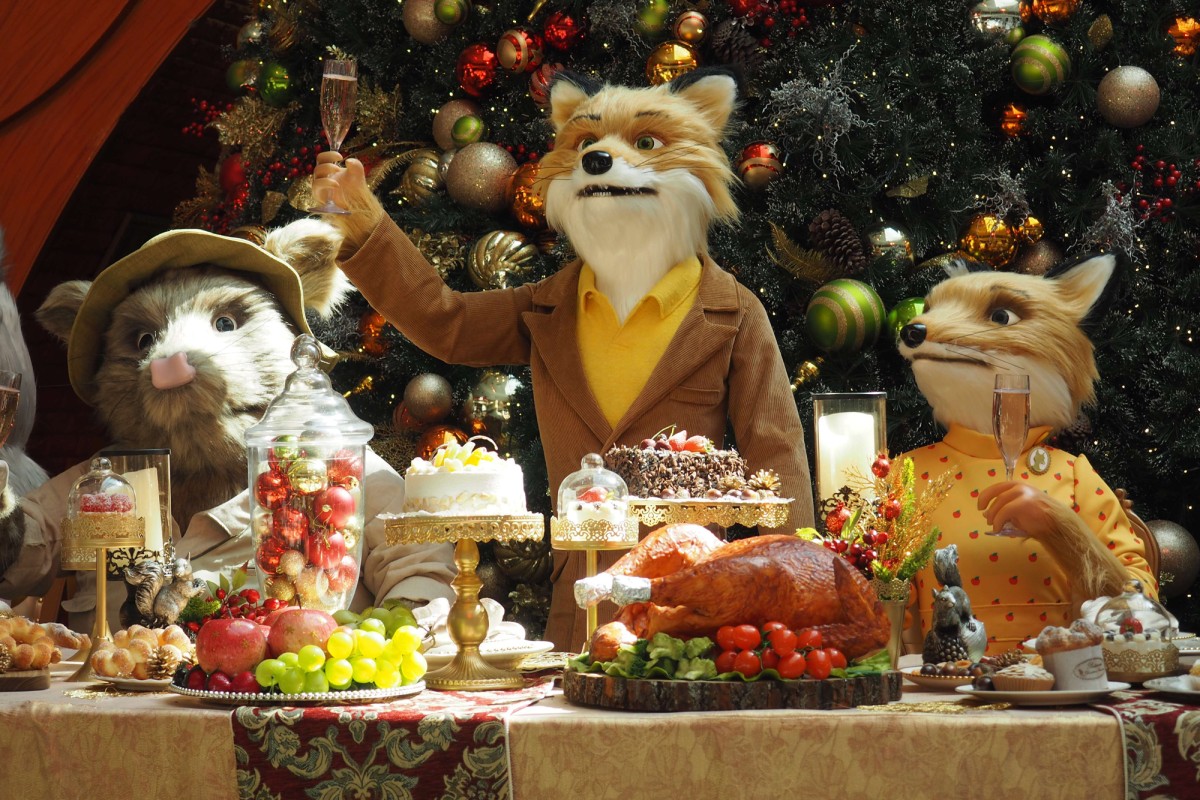
Fantastic Mr Fox puppet maker Ian MacKinnon celebrates 100 years of Roald Dahl in Hong Kong
The puppet maker behind the film talks about the challenges of bringing Mr Fox and friends to life
 The festive feast is an iconic scene from the film.
The festive feast is an iconic scene from the film. A very furry fox raises his glass while his family and woodland friends tuck into a giant Christmas feast. It’s a scene from the 2009 film Fantastic Mr Fox, as well as a new hands-on display at Elements shopping mall at Kowloon station. Visitors can take a selfie with all the characters from the film, ride on a motorbike next to Mr Fox, read a book in the story zone, and learn how the puppets from the film were made. Every 30 minutes, there is a 90-second show of lights, music and a hearty “Merry Christmas!” from Mr Fox himself.
“We focused on the idea of bringing people together around a traditional Christmas dinner,” says the scene’s art director Ian MacKinnon, whose company also made the puppets used in the film. “We took the film’s feast scene and tried to recreate that on a large scale.”
Based on the classic book by children’s author Roald Dahl, the story follows a family of foxes at war with three farmers over food. The director, Wes Anderson, is known for having a very careful and colourful style. He usually makes live action films with actors in costume, but he wanted to use animation to bring Mr Fox and friends to life. He chose an old style known as stop motion, or stop frame, where lots of still pictures are joined together to make it look like a puppet is moving.
Stop motion takes a long time, because animators only move the puppets slightly between each frame. There are 24 frames per second of animation, and when all the frames are joined together, it looks like the puppet is moving naturally. Each animator probably only makes six to eight seconds of animation per week, and there were about 30 animators working on the film.
It was MacKinnon and his team’s job to make puppets that matched Anderson’s vision. “Fantastic Mr Fox was Anderson’s first and favourite book as a child. And he loves the handmade quality to stop motion animation,” the British puppet-maker tells Young Post.
MacKinnon’s team sculpted the characters in plasticine, before making a “soft casing”. Some characters are made of silicone and others – like the foxes – are made of foam latex. Then fur and costumes were added. Underneath it all, there is a moveable metal frame – like a skeleton – which lets animators move the puppet without it breaking. To create expressions, the heads have special mechanisms that let the animator move the jaw, the nose and the eyebrows.
Like Anderson, MacKinnon loved puppets as a child, and would make his own characters. He got his break in puppet making when he was 18. After just six weeks in art college, he dropped out because he got offered a job by the famous animator Gerry Anderson. “I loved animation and puppets, but I never thought you could choose puppet making as a career,” he says. “My very first job was working glueing fur onto cats. Thirty years later, I’m still glueing hair onto puppets!”
It is 100 years since the birth of Dahl, and the Elements display is one of many events around the world celebrating the author. As well as sharing the magic of Dahl’s stories and Anderson’s film, MacKinnon wants to inspire students to try animation or puppet making. “Learn to draw – start with a pencil and paper. It’s important to have these basic skills,” he advises. “And use your imagination! Animation is there to tell stories.”
He continues, “Watching TV puppet shows in the ’70s, I was curious about how those knitted toys came to life. I thought it was magic – I later found out it was stop motion animation. When you see the characters coming to life – that’s magic to me.”
Edited by Lucy Christie
